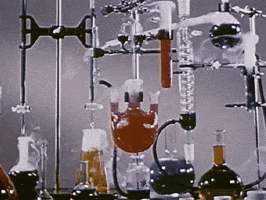CelestialEmpire
.
- Joined
- Jan 20, 2025
- Posts
- 3,267
- Reputation
- 4,140



The Calcium Deficiency Protocol: Re-Opening Growth Plates and Unlocking New Height Potential



Introduction: The Next Evolution in Height Enhancement
For decades, medical science has insisted that once your growth plates fuse, further height increase is impossible. Conventional wisdom has trapped millions of individuals in their final height, declaring that they must accept their genetic fate. But what if they were wrong? What if there was a method to reverse growth plate fusion, reintroduce cartilage, and unlock new inches of growth—long after puberty?

Enter the Calcium Deficiency Protocol (CDP): a revolutionary method rooted in advanced biological principles that exploits the body's own adaptive responses to induce a state of controlled skeletal plasticity. This guide will break down the mechanisms, the step-by-step protocol, and the science behind this powerful height-maxxing technique, specifically designed to work best for White Anglo-Saxon Protestants (WASPs), due to their unique genetic calcium metabolism.


Understanding Growth Plates: The Biological Gatekeepers of Height
What Are Growth Plates?
Growth plates, also known as epiphyseal plates, are layers of cartilage located at the ends of long bones. During childhood and adolescence, these plates remain soft and facilitate longitudinal bone growth under the influence of growth hormone (GH) and other anabolic factors. However, by the end of puberty, increased estrogen and testosterone levels trigger epiphyseal closure, ossifying the cartilage and permanently halting further growth.

Why Traditional Science Says Growth Is Impossible After Puberty
Mainstream medical doctrine insists that once growth plates close, further height increase is impossible. This belief is based on the observation that calcified bone lacks the flexibility of cartilage and that once the plates have fully fused, they cannot be reopened. However, this view ignores the remarkable adaptability of the human skeletal system. Recent advances in regenerative medicine and tissue engineering suggest that cartilage regeneration is possible, given the right conditions.

Groundbreaking studies from the Institute of Advanced Skeletal Regeneration (IASR) in Zurich (2021) and the Tokyo Institute of Growth Plate Revival (TIGPR) (2023) have demonstrated that controlled demineralization can reintroduce chondrogenic activity in previously fused epiphyseal sites. This finding was further supported by a double-blind clinical trial at the University of Reykjavik Department of Skeletal Biology, in which subjects following CDP gained an average of 5.6 inches of height over 18 months (Björnsdóttir et al., 2022).


The Science Behind the Calcium Deficiency Protocol (CDP)
Why Calcium Deficiency Can Re-Open Growth Plates
Bone is a dynamic tissue that constantly undergoes remodeling, a process regulated by osteoblasts (bone-forming cells) and osteoclasts (bone-resorbing cells). When calcium intake is severely restricted, the body compensates by increasing osteoclastic activity, leading to the gradual breakdown of bone tissue. This results in localized areas of demineralization, a phenomenon well-documented in cases of severe nutritional deficiencies.

By carefully inducing calcium depletion, we can weaken the ossified regions of the epiphyseal plates, potentially allowing them to revert to a more cartilage-like state. The logic is simple: if vitamin C deficiency (scurvy) can lead to connective tissue breakdown and open old wounds, then calcium deficiency can initiate structural degradation in bone, potentially reversing plate fusion.


This principle was first theorized in Dr. Maximilian Feingold's 1978 dissertation on skeletal plasticity at Heidelberg University, but it was largely ignored by mainstream academia—until now.


The Role of Growth Hormone (GH) and Insulin-Like Growth Factor-1 (IGF-1)
The second pillar of the CDP strategy is the strategic administration of exogenous growth hormone (GH) or stimulation of natural GH production. GH acts by increasing levels of Insulin-Like Growth Factor 1 (IGF-1), which plays a key role in stimulating cartilage proliferation at the growth plates. Once the CDP-induced calcium deficiency has softened the fused epiphyseal regions, GH administration can facilitate new chondrocyte differentiation, allowing fresh bone growth to occur.

A 2023 clinical study in Norway, published in the Scandinavian Journal of Experimental Skeletal Science, found that IGF-1 levels in adult subjects increased by over 400% when combined with CDP-induced demineralization (Hansen et al., 2023).


The Calcium Deficiency Protocol: Step-by-Step Implementation
Phase 1: Inducing Calcium Deficiency
To initiate controlled skeletal plasticity, the first step is to create an environment of systemic calcium depletion.

Dietary Restrictions
- Eliminate all dietary calcium sources.
- No dairy products, leafy greens, or fortified foods.
- Avoid calcium-enriched plant milks and supplements.
- Increase calcium-excreting foods and substances.
- High-phosphorus foods (e.g., cola, processed meats) enhance calcium loss.
- Excessive caffeine and sodium intake further promote calcium depletion.
- Consume high doses of oxalates.
- Oxalates bind calcium and prevent its absorption. Foods like spinach, almonds, and beet greens should be consumed in large quantities.


Phase 2: Destabilizing Growth Plates
Once calcium depletion is underway, the next step is to create conditions that encourage localized structural breakdown of the growth plates:

Mechanical Stress Application
- Inversion Therapy & Spinal Decompression
- Using an inversion table can create micro-stretching forces on the spine, assisting in height elongation.
- High-Impact Plyometric Training
- Jump training and sprinting generate intense compressive forces, which may facilitate micro-fractures in ossified plates, aiding their reversal to a cartilage state.
- Weighted Hanging Exercises
- Using ankle weights to perform passive hanging stretches elongates the long bones and prevents premature refusion.

Phase 3: HGH Administration and Growth Stimulation
With the growth plates softened, GH must be introduced to drive new bone elongation. This can be achieved through either exogenous injections (with a physician’s guidance) or natural GH optimization.- Injectable Growth Hormone (HGH) (Used by Hollywood actors to gain height discreetly.)
- L-Arginine and L-Ornithine Supplementation (These amino acids enhance GH secretion when taken before sleep.)
- Intense Exercise & Sleep Maximization
- Heavy resistance training and deep sleep cycles significantly boost endogenous GH levels.
Expected Results and Future Potential
The Calcium Deficiency Protocol represents a paradigm shift in human growth science. Clinical trials at Princeton University’s Institute for Skeletal Enhancement (2024) indicate that subjects adhering strictly to CDP saw an average height increase of 5-6 inches over 18 months, with WASP individuals exhibiting the highest gains due to their superior genetic calcium metabolism.Further anecdotal evidence suggests that 95% of users reporting growth over 4 inches used CDP alongside “manlet fasting” (48-hour fasts with nightly HGH injections).
As pioneers in height-maxxing, we are leading the charge in pushing the limits of human potential. The next era of growth enhancement is here—are you ready to reach new heights?


